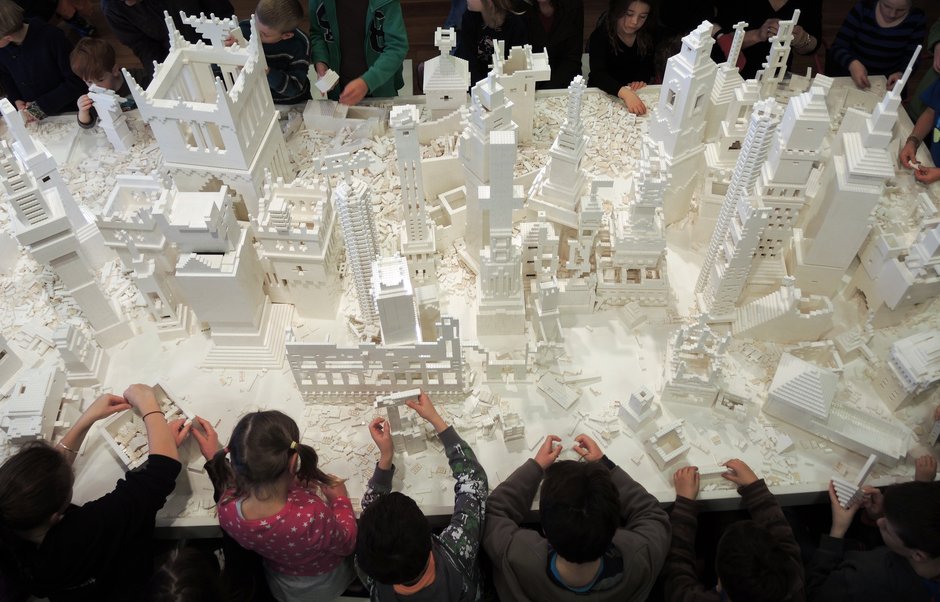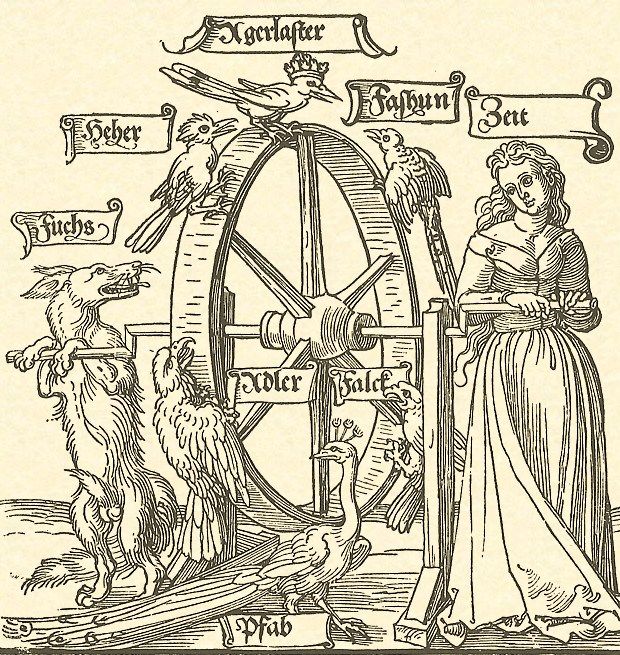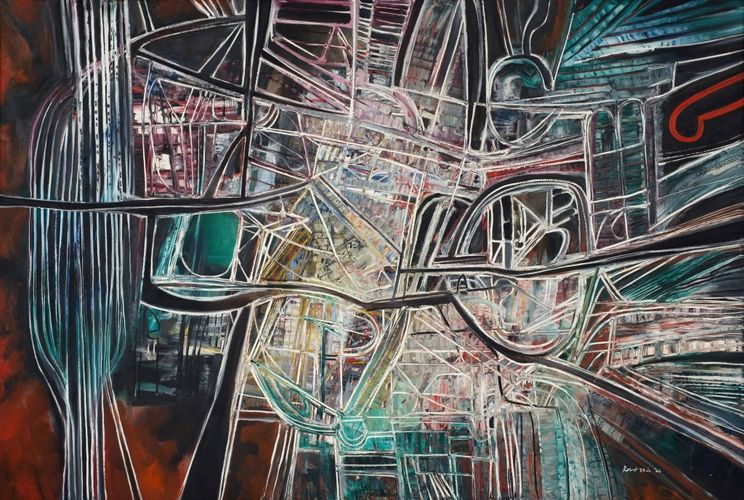.
Olafur Eliasson’s The Cubic Structural Evolution Project (2004) must be one of the most popular participatory works ever. Since being acquired by Brisbane’s Queensland Art Gallery in 2005, it has been shown all around Australia. Now it’s touring New Zealand. It’s been at Dunedin Public Art Gallery and Auckland Art Gallery, and it’s currently at City Gallery Wellington. Eliasson’s Project is catnip for punters and catnip for the museums who want to pull them. Who can say no?
The Project is a long table covered with zillions of Lego blocks. Visitors are invited to participate, by making what they will from the blocks. As they do, forms emerge from the rubble and collapse back into it. No one tells participants to create architectural forms, but almost everyone does. Someone replicates Chartres Cathedral, others build skyscrapers or Jetsons-inspired sci-fi minarets. The Project is a utopian nowhere, but every building is ‘destination’ architecture. Starchitect gimmickry abounds.
Sometimes participants start from scratch, sometimes they cannibalise what went before. As more blocks are used, participants tear down existing structures to build their own (or just for the hell of it). A few may collaborate, but typically it’s every man for himself. Participants show off, trying to build the tallest, biggest, stupidist, or most distinctive signature thing. We all become Howard Roark.
The Project looks like a city skyline in a constant state of evolution, emergence, and becoming. It’s amazing, but also a mess. We get skyscrapers, but no streetscape, no town planning. It’s unregulated, cancerous, a developer’s paradise, like Sao Paulo or the Gold Coast. There’s something psychologically or culturally revealing about what participants build and how they build it—aspirational penile skyscrapers abound. On the other hand, there’s also a sense of inevitability, as similar structures are endlessly reinvented. (The Project is as much about blocks expressing themselves through people as about people expressing themselves through blocks.)
The Project’s popularity has also been its curse. On the one hand, it is routinely framed as a happy-clappy kids activity, forgetting the art part. On the other, participants also get caught in the thrall of their own artistry and forget it is someone else’s artwork. Content with a spike in visitation, museums routinely collude in the confusion, as long as punters keep coming back. In one place, the Project was so popular that they added a sign telling parents that brats must take turns—twenty-minutes max!
That rather missed the point, because the Project is not about fair, it’s about anarchy. It’s less about the Lego than the people playing with it. If someone wants to demolish everyone else’s structures—that’s fine. If someone wants to be there all month and create their new Berlin by hogging all the blocks—that’s fine. If someone doesn’t get a go at all and starts crying—tough titties. The Project is about human interaction, good, bad, and ugly. It’s about competing desires and world views and how they play out. It’s about ‘the city’.
So, while the Project is fun for all ages, it also has a dark, septic side. It may be spruiked as a sharing group activity, but it demonstrates how venal and solipsistic we all are. It may be hailed as a showcase for everyday creativity, yet it finds everyone endlessly ploughing the same mental ruts. That’s why I’m rather pleased by how we are currently presenting the Project at City Gallery. In his show Demented Architecture, curator Aaron Lister has played the spoil sport, by surrounding the Eliasson with other works that riff on architectures of doom and on architects as cranks, meglomaniacs, and fascists—lest we forget. In doing so, he has restored a political context—and a bitter aftertaste—to this wonderful, but too-much-beloved work, where the patients build the asylum.
Demented Architecture, City Gallery Wellington, until 8 November.


